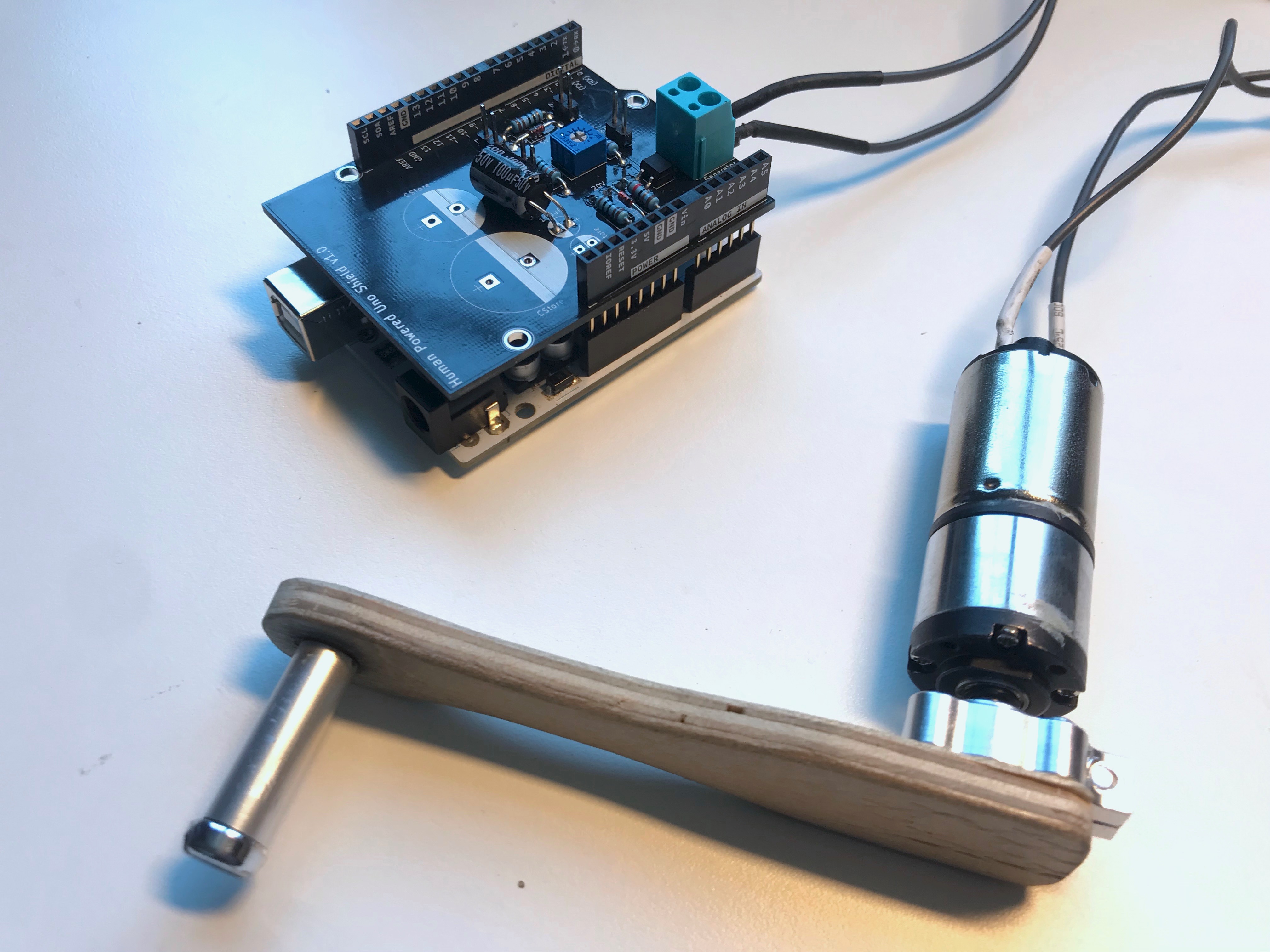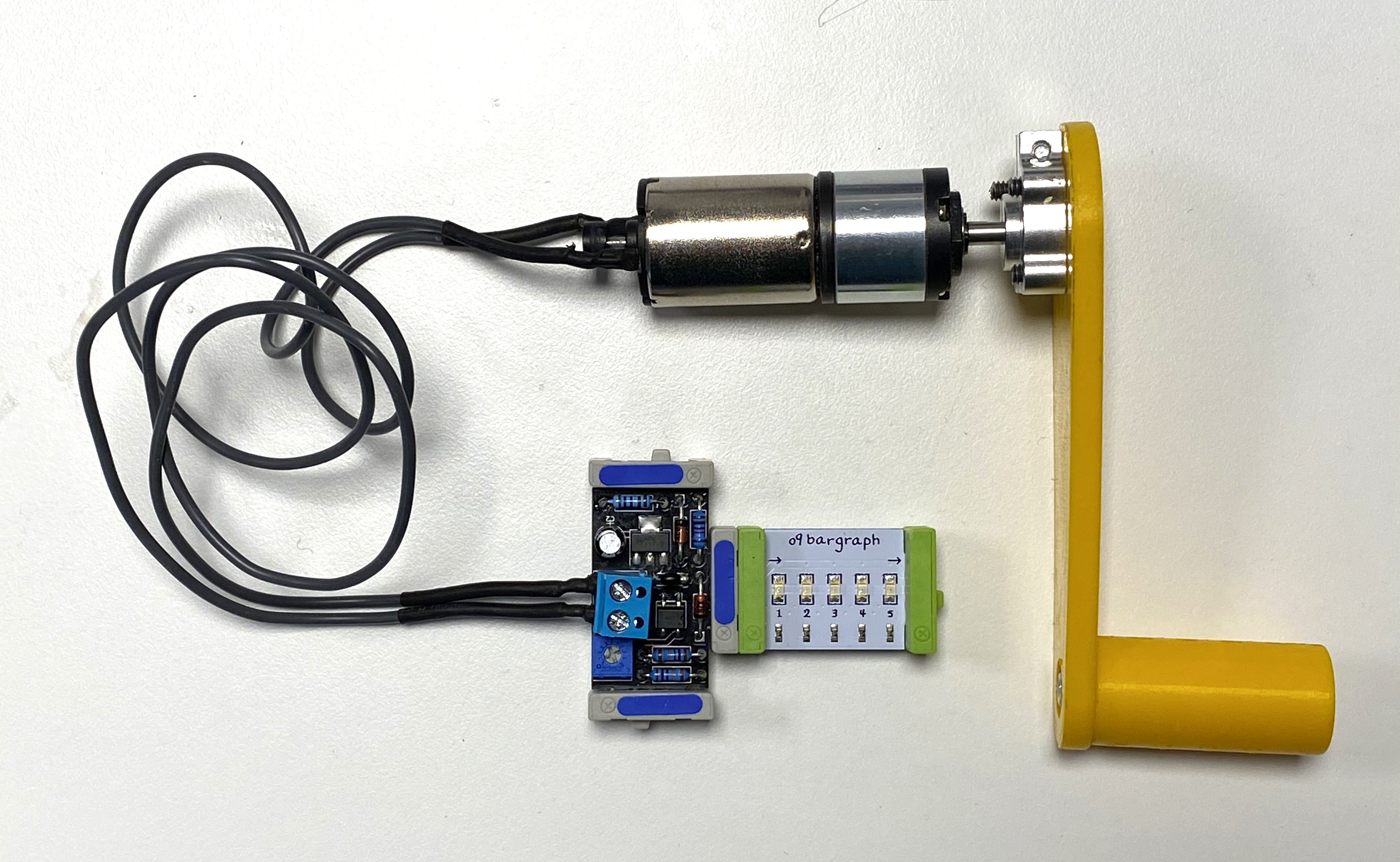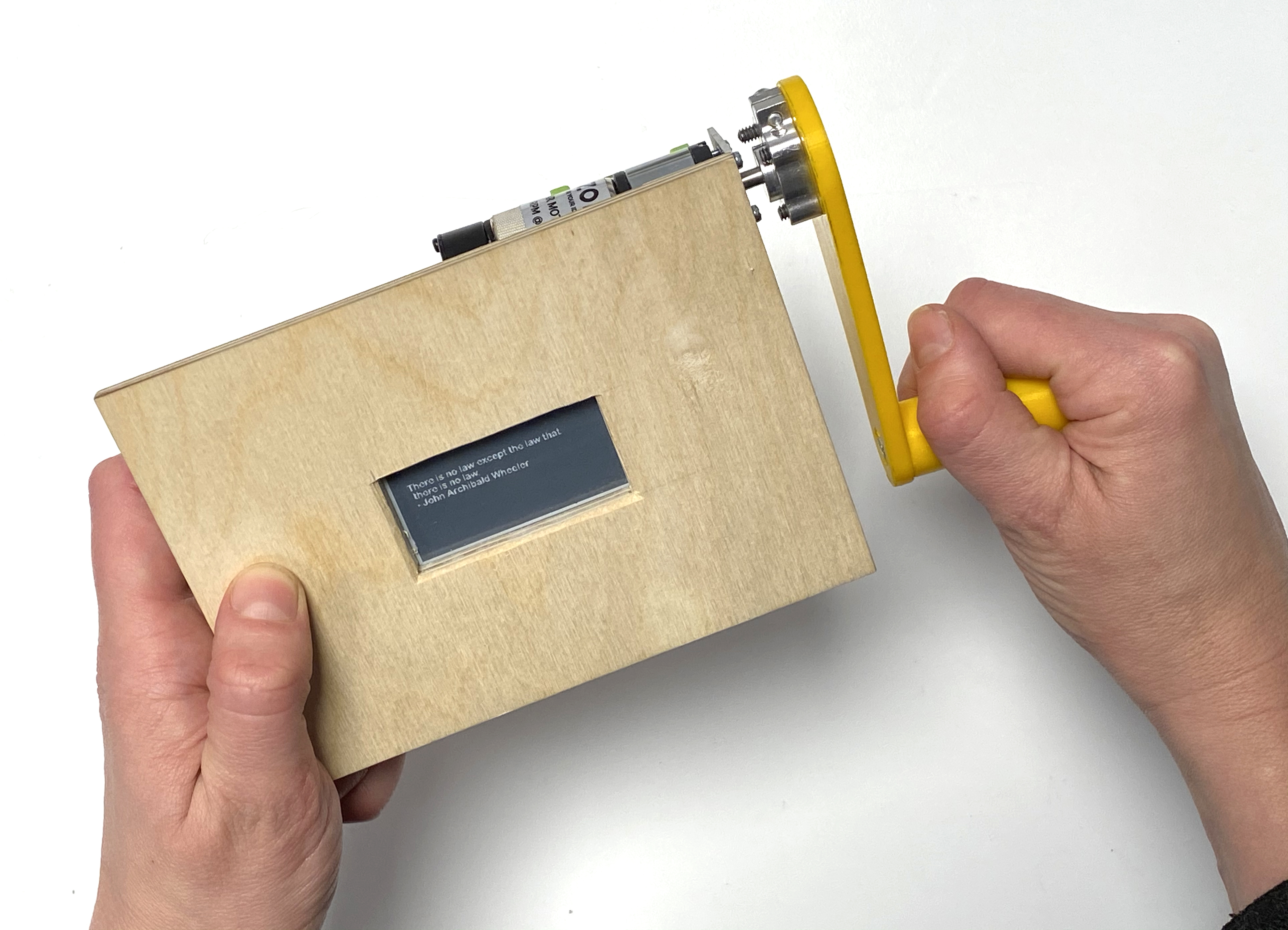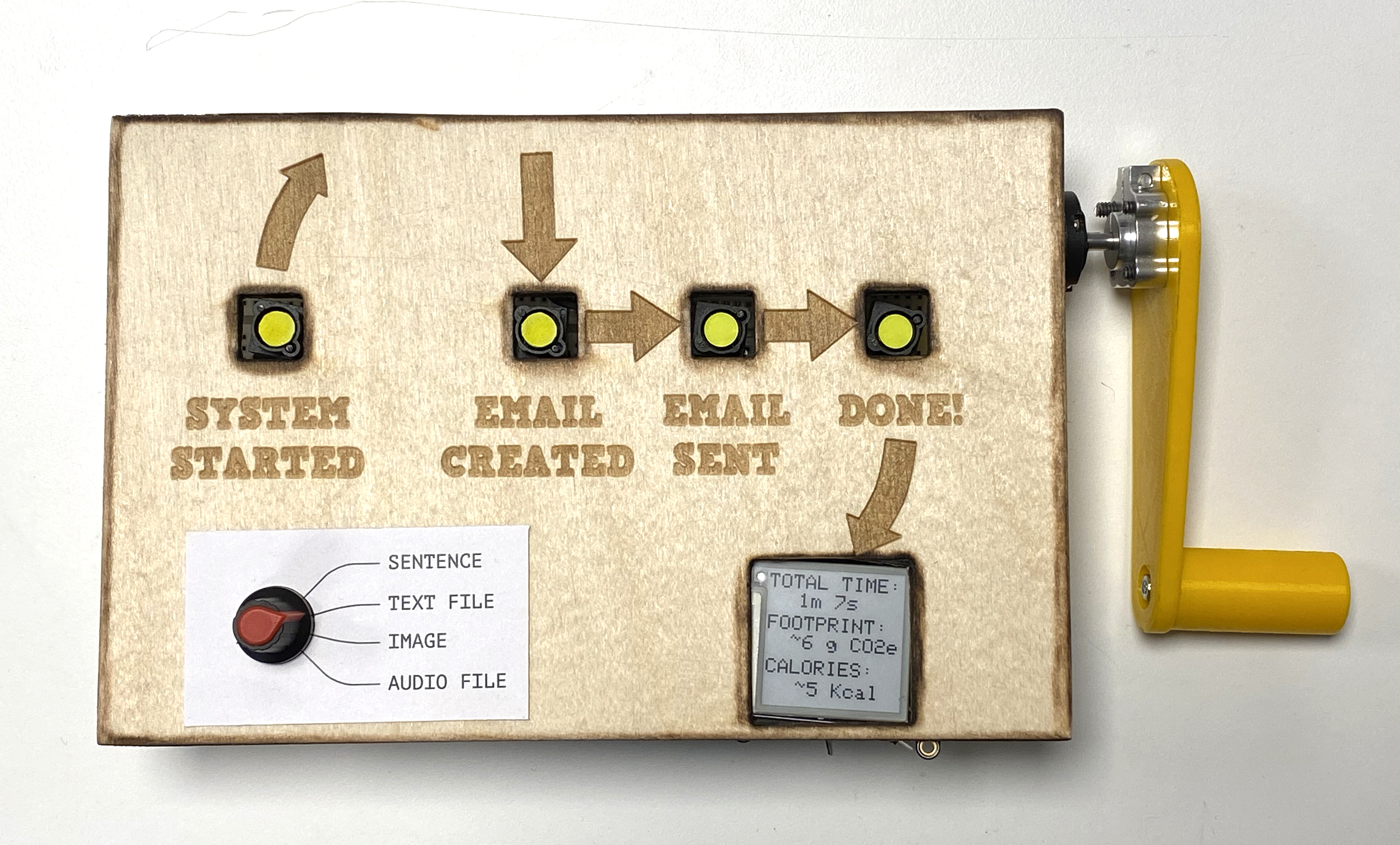Human-Powered Interactions
My current main research focus concerns human-powered interactions. In short this area concerns interactive technology that powers itself from the interactions with it.
Current ongoing projects are:
- Crank-powered interactive devices
- Body heat powered devices
- Rethinking electromagnetic induction from an interaction perspective
- Toolkits and essential knowledge to enable interaction designers and makers building human-powered interactions
- Human-powered musical instruments
Playing with Electromagnetic Induction
In this work by master student Elena Gonzales Rabal we have explored a new form of interactive electromagnetic generator. The design resembles a bow (violine) in the form of a rod that the user can move back and forth. The interaction modalities are tilt, speed, and position. For position we have designed a quadrature encoder using coils responding to the magnets inside the rod.

Crafting Crank-Powered Interactions
Presentation at the CHI workshop on Selfsustainable HCI.
Human-Powered Arduino Uno Shield
This shield was made to enable quick prototyping of human-powered interactions using the Arduino Uno and a DC generator. The shield targets interaction designers and makers. Although the Uno is not a very energy efficient device electromagnetism using (e.g) cranks still yields sufficient power to make interesting applications. The Board as space for additional storage capacitors, has a low pass filter to remove noise, and also provides the direction and speed of rotation hard wired to 2 different inputs on the Arduino.

Human-Powered LittleBit
To enable early learnings among students and children about electromagnetic generation and prototyping of human-powered interactions we have developed this LittleBit. The bit allow the connection of a DC generator and have 3 output ports providing 1) power only, 2) power + direction and 3) power + speed. The responsiveness of the speed can be tuned with an onboard trimpot to account for different generators.

Hand-Cranked Quote Reader
In this project we wanted to explore interactivity when generating power. By cranking the device the user can scroll through a list of various famous science quotes. Depending on the direction of cranking the devices iterates the list backwards or forwards. One learning was the essential need to use materials with memory, hence we switched to using an e-ink display in the process. Another learning concerns the importance of dealing with the inherent conditions of power comming in "burts" and the fact that the devices is "always-off". This emphizeses the need to keep state between power ons and the the need for swift boot time.

Human-Powered Emailing Machine
In this project we build a small machine that can send emails on crank-power over wifi. The goal of the project was to explore usage aspects of crank-powered devices. The user boots the sender through cranking and maintains the cranking until the email has been sent. Feedback on progress of this process is communicated through magnetic indicators (keeps state when power is gone) and in the end of the process an e-ink is updated displaying the total time for sending the email, estimated carbon footprint, and estimated calories burned in the process.

Prototyping Board to Enable Body Heat Powered Interactions
In this work we have designed PCB with the aim of opening up body heat as a power source for Interaction Designers and Makers. This board is based on the LTC3108 chip from Analog Devices. The circuit provides several power outputs dedicated for different purposes. For usage example see the following example.
Wirelessly Controlling Lights Powered by Body Heat
In this project we are looking at how to design body-heat powered interactive devices. Here a demonstration of an early prototype capable of wirelessly (868MHz radio) controlling light switches in the room. The design is using the EnOcean PTM330 chip for wireless communication.
Hand-Cranked Powerpoint Slide Clicker
In this project we explored a simple yet useful use case for human-power in the form of a hand-cranked powerpoint clicker. The prototype is constructed by stripping down and circuitbending a commercial clicker and adding one of our human-power PCBs. Works magic!